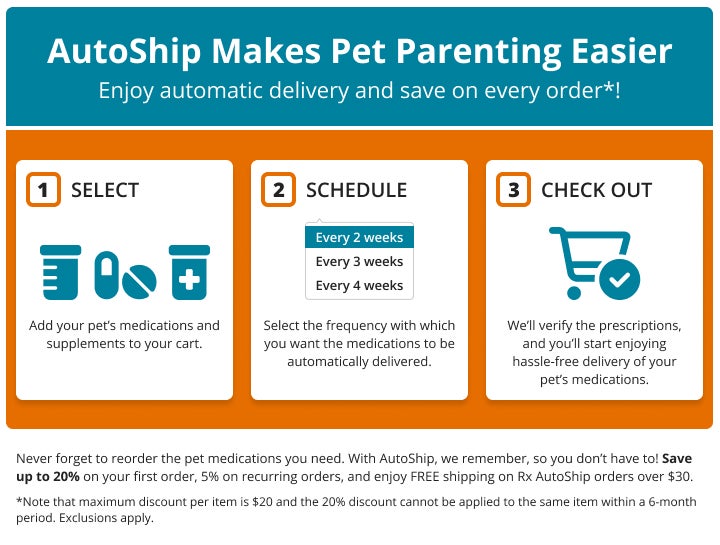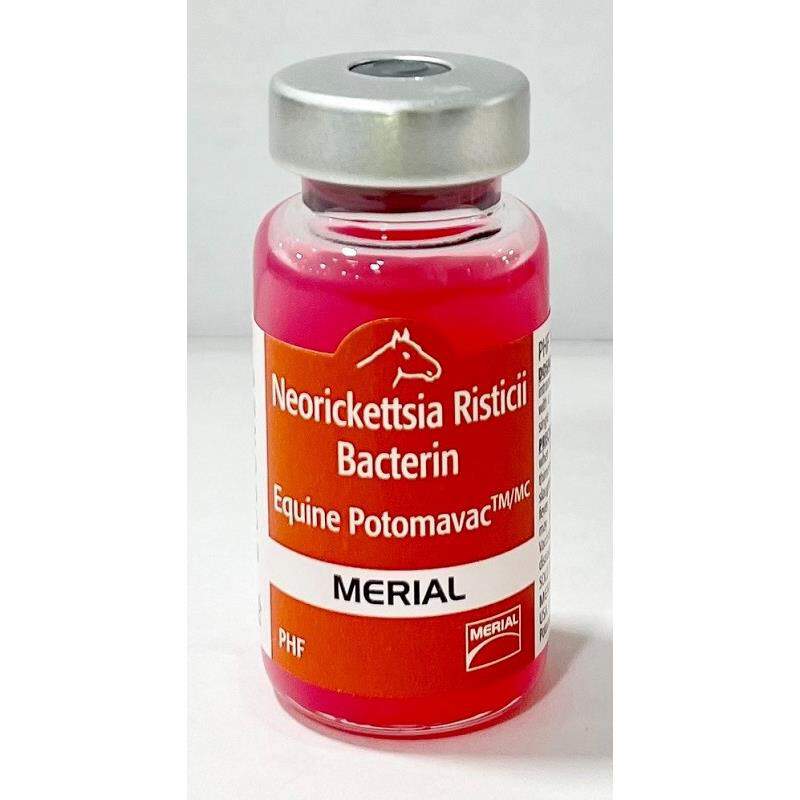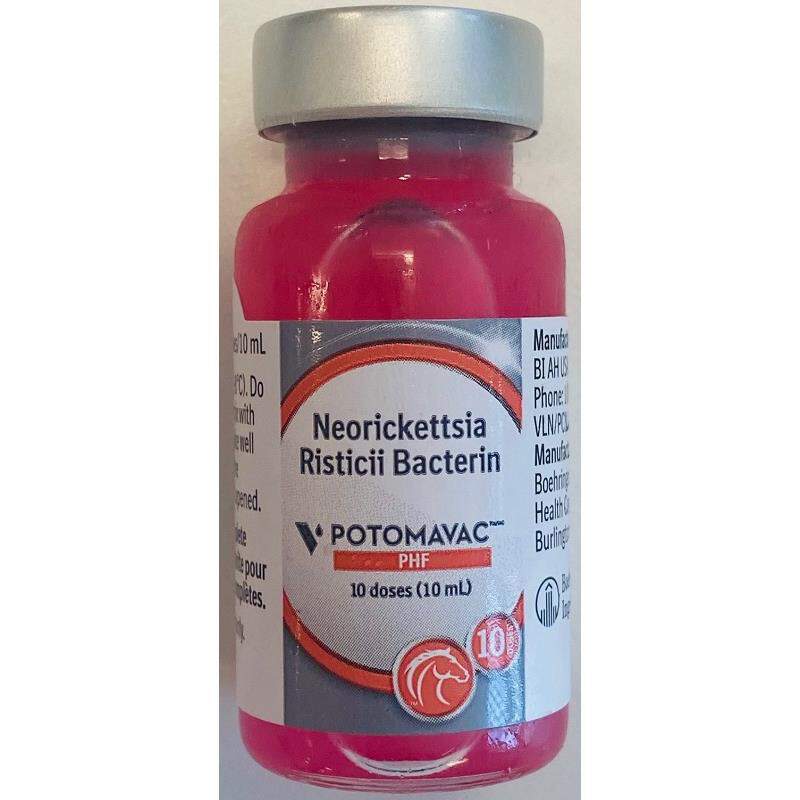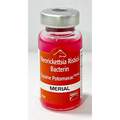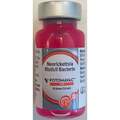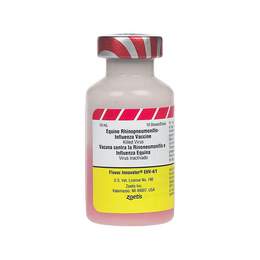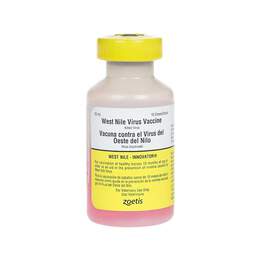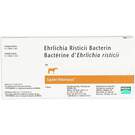Equine Potomavac 10 ds Vial Description
Equine Potomavac® contains inactivated Ehrlichia risticii in the form of a liquid suspension. It works to prevent equine monocytic ehrlichiosis (Potomac Horse Fever) associated with Ehrlichia risticii. See Allivet's
Horse Vaccine Chart to find out which vaccine is right for your horse.
*Due to state regulations Allivet can't ship this item to the following states GA, IA, or MN.
What is Equine Potomavac 10 ds Vial?
The EQUINE POTOMAVAC® vaccine is a liquid suspension of inactivated Ehrlichia risticii recommended for the vaccination of healthy horses as an aid in the prevention of Potomac Horse Fever (equine monocytic ehrlichiosis) caused by E. risticii.
Which animals/pets is Equine Potomavac 10 ds Vial for?
For use in healthy horses (ages 3 months and up).
Equine Potomavac 10 ds Vial uses
Equine Potomavac® boasts 86% efficacy against Potomac Horse Fever and 100% efficacy in mortality protection. It protects horses from equine monocytic ehrlichiosis (PHF) associated with Ehrlichia risticii infection.
What does Equine Potomavac 10 ds Vial do?
Equine Potomavac® contains inactivated Ehrlichia risticii in the form of a liquid suspension for injection. It works to trigger the immune response of healthy horses, protecting them against equine monocytic ehrlichiosis (Potomac Horse Fever) associated with Ehrlichia risticii infection.
Equine Potomavac 10 ds Vial side effects
Rarely, the following side effects may occur:
- Hypersensitivity
- Inflammatory reactions
- Fever
- Lethargy
Epinephrine, anti-inflammatories, and/or antihistamines may be required.
Equine Potomavac 10 ds Vial ingredients
EQUINE POTOMAVAC® is a liquid suspension of inactivated Ehrlichia risticii.
Equine Potomavac 10 ds Vial overdose: What to do?
Contact your nearest emergency animal hospital.
What to know before using Equine Potomavac 10 ds Vial
- In field studies and controlled testing, the efficacy and safety of this product have been proven.
- Animals who are diseased or stressed can have a compromised immune response and, therefore, may not achieve optimal results.
- Re-vaccination is recommended annually following primary and booster vaccines.
- Be sure to discuss a vaccination schedule for your horse with your veterinarian.
How is Equine Potomavac 10 ds Vial sold?
Equine Potomavac 10 ds vial
Boehringer Ingelheim
Tips for using Equine Potomavac 10 ds Vial
PHF (Potomac Horse Fever) is a disease frequently seen in horses that causes gastrointestinal upset, including diarrhea and enteritis. Neorickettsia risticii and Ehrlichia risticii cause PHF. These are organisms that tend to live in many cells within a horse's body. PHF may also be called equine ehrlichial colitis or equine monocytic ehrlichiosis.
DOSAGE: For primary vaccination, aseptically inject 1 mL (1 dose) intramuscularly into healthy horses 3 months of age or older. Revaccinate with a second 1 mL dose 3 to 4 weeks later. Revaccinate annually with a single 1 mL dose.
EQUINE POTOMAVAC® is a liquid suspension of inactivated Ehrlichia risticii
HORSE POTOMAC FEVER VACCINE
 Potomac horse fever (PHF) is a disease of equids best known for its gastrointestinal signs such as enteritis and diarrhea. This disease is caused by Neorickettsia risticii, an organism that lives inside several different cells of the equine body. This disease has been referred to in the past as equine monocytic ehrlichiosis, or equine ehrlichial colitis. The first prominent sign of PHF often observed by owners is a decrease in feed intake. In fact, some horses may not initially show any other clinical signs except not eating.
Potomac horse fever (PHF) is a disease of equids best known for its gastrointestinal signs such as enteritis and diarrhea. This disease is caused by Neorickettsia risticii, an organism that lives inside several different cells of the equine body. This disease has been referred to in the past as equine monocytic ehrlichiosis, or equine ehrlichial colitis. The first prominent sign of PHF often observed by owners is a decrease in feed intake. In fact, some horses may not initially show any other clinical signs except not eating.
Potomac horse fever is caused by Neorickettsia risticii, an organism member of the Erlichiaea family. According to the isolates obtained from clinical cases, there is diversity in the organism and each isolate has a different pattern of antigenic proteins. Therefore, Potomac horse fever is caused by more than one strain ofNeorickettsia risticci. Cases of Potomac horse fever have a seasonal presentation with the highest number of cases with clinical signs in July, August, and September.
Potomac horse fever is found throughout in North America and has been reported in most regions of the United States and Canada. Studies have shown that 16 - 33 percent of horses with no history of having had the disease have evidence of having been exposed to N. risticii. N. risticii can cause abortions, and it is related to placentitis and retained placenta in most cases. The aborted fetus will show signs of the infection as well. Direct transmission from horse to horse does not occur.
Read more about this product


 Potomac horse fever (PHF) is a disease of equids best known for its gastrointestinal signs such as enteritis and diarrhea. This disease is caused by Neorickettsia risticii, an organism that lives inside several different cells of the equine body. This disease has been referred to in the past as equine monocytic ehrlichiosis, or equine ehrlichial colitis. The first prominent sign of PHF often observed by owners is a decrease in feed intake. In fact, some horses may not initially show any other clinical signs except not eating.
Potomac horse fever (PHF) is a disease of equids best known for its gastrointestinal signs such as enteritis and diarrhea. This disease is caused by Neorickettsia risticii, an organism that lives inside several different cells of the equine body. This disease has been referred to in the past as equine monocytic ehrlichiosis, or equine ehrlichial colitis. The first prominent sign of PHF often observed by owners is a decrease in feed intake. In fact, some horses may not initially show any other clinical signs except not eating.

